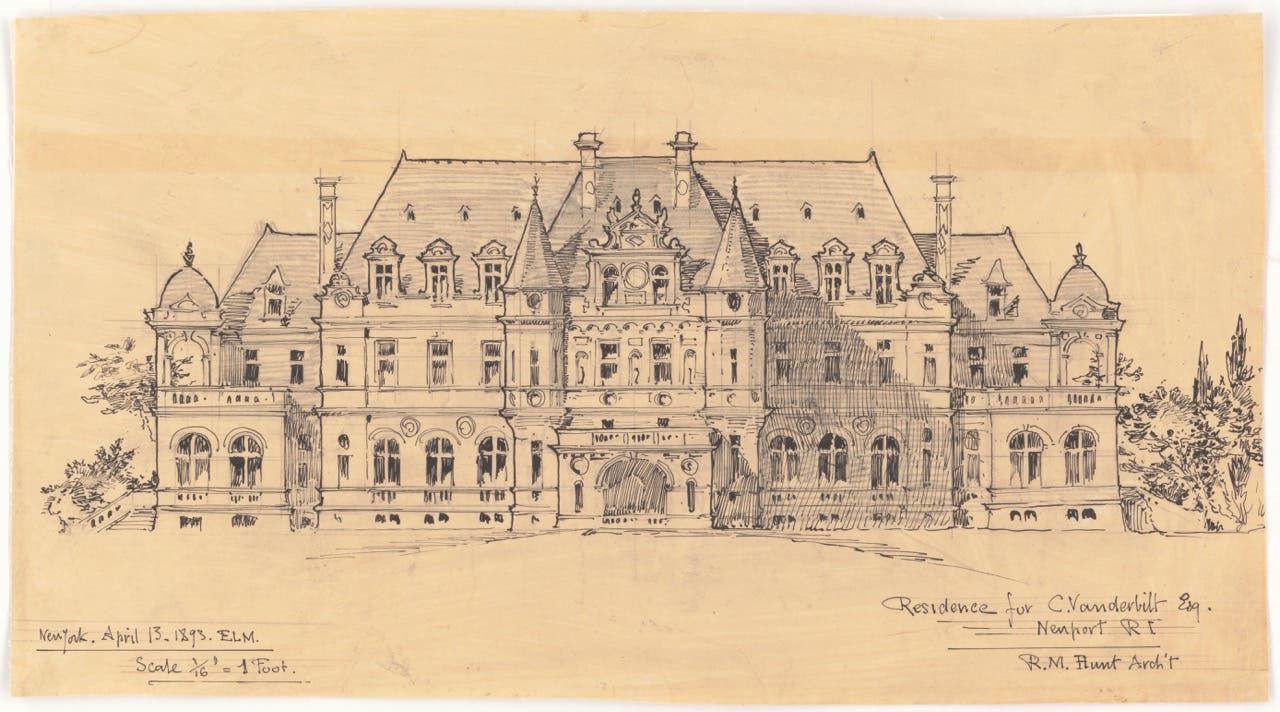
Features
Book Review: McKim, Mead & White: Selected Works 1879-1915
McKim, Mead & White: Selected Works 1879-1915
Introduction by Richard Guy Wilson; Essay by Leland Roth
Princeton Architectural Press in association with the Institute of Classical Architecture & Art, 2018
428 pages, Hardcover
When the first volume of Monograph of the Work of McKim, Mead & White, 1879-1915 appeared in 1915, it soon became a major influence on the direction of American architecture. Long out of print, the original four folio volumes now cost well over $1,000 on the rare book market (and finding a complete set is nearly impossible).
That’s why traditionalist architects are hailing the recent publication of McKim, Mead & White, Selected Works 1879-1915. This large-format (9 in. x 12 in.) reprint edition contains all the drawings and photos from the original four volumes (400 plates in all), albeit in a reduced size from the original 20-in. folio pages.
The 1915 monograph was not a coffee-table book meant to wow a general audience. Rather, it was intended for design professionals and others seriously interested in architecture. There’s no breathless prose describing each building; every plate merely carries a descriptive title, location, and date of completion, and is illustrated with black & white photos and drawings. A few of the less complex projects (e.g., “Houses on Commonwealth Ave., Boston, Mass.”) are represented by a single black & white photo, while major projects (e.g., Boston Public Library) are delineated with multiple photos and drawings showing elevations, plans, and architectural details. Each drawing includes a scale enabling serious readers to determine as-built sizes and proportions.
Most of the 160 commissions shown are executed in the firm’s signature classical style, although some plates illustrate the firm’s dexterity with any historically inspired mode when appropriate. Introductory essays by Richard Guy Wilson and Leland Roth provide informative overviews of the firm’s history and its enduring impact deep into the 20th century—especially as a training ground for young architects who went on to create such landmarks as the New York Public Library, Grand Central Station, the Lincoln Memorial, and U.S. Supreme Court.
In 1924, Charles Herbert Reilly, director of the School of Architecture at the Univ. of Liverpool wrote: “The work of McKim, Mead & White sums up the finest aspirations of a great people at a great epoch.” Today, the work displayed in this monograph can still inspire anyone wishing to create a more harmonious and humane built environment.
Clem Labine is the founder of Old-House Journal, Clem Labine’s Traditional Building, and Clem Labine’s Period Homes. His interest in preservation stemmed from his purchase and restoration of an 1883 brownstone in the Park Slope section of Brooklyn, NY.
Labine has received numerous awards, including awards from The Preservation League of New York State, the Arthur Ross Award from Classical America and The Harley J. McKee Award from the Association for Preservation Technology (APT). He has also received awards from such organizations as The National Trust for Historic Preservation, The Victorian Society, New York State Historic Preservation Office, The Brooklyn Brownstone Conference, The Municipal Art Society, and the Historic House Association. He was a founding board member of the Institute of Classical Architecture and served in an active capacity on the board until 2005, when he moved to board emeritus status. A chemical engineer from Yale, Labine held a variety of editorial and marketing positions at McGraw-Hill before leaving in 1972 to pursue his interest in preservation.








